100 Walls of Faith
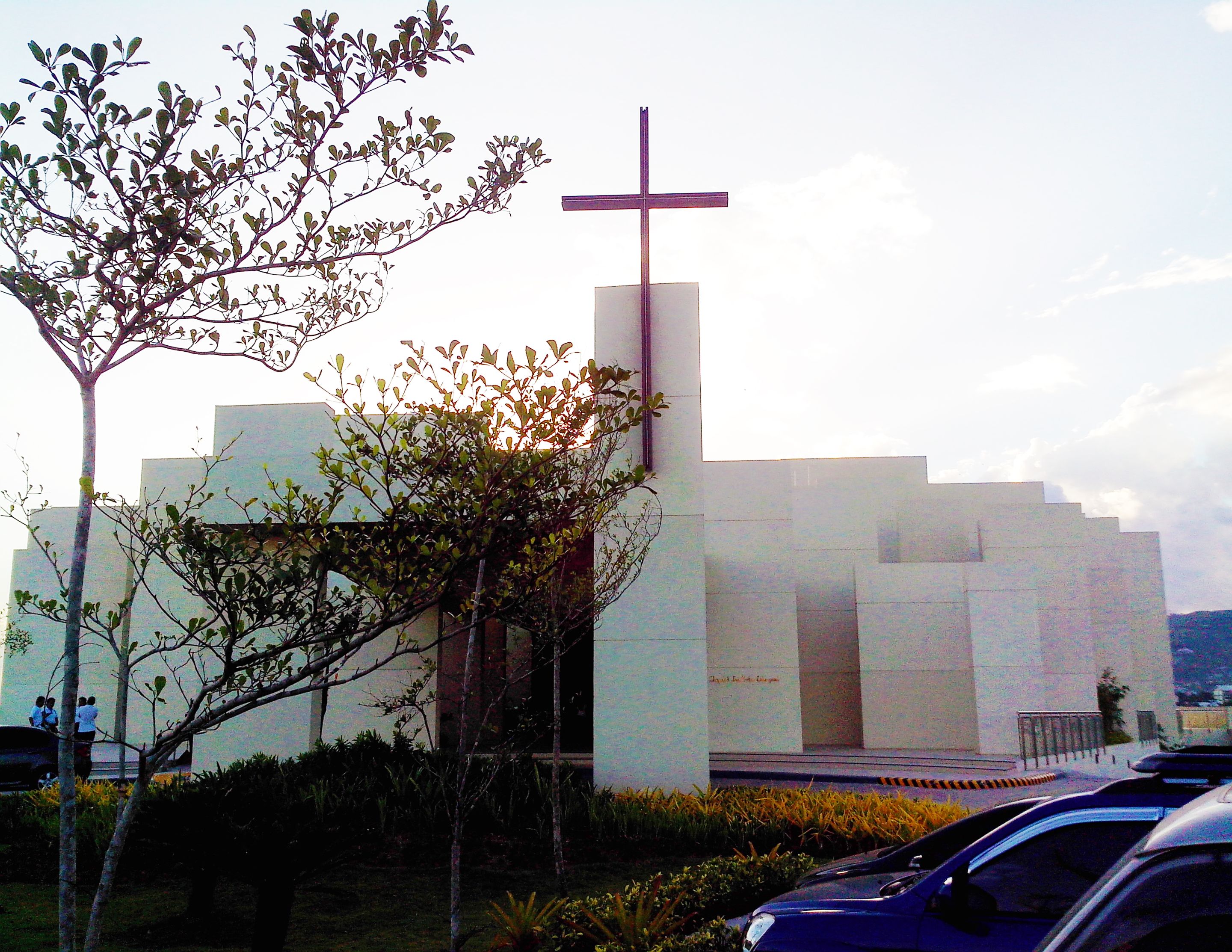
In the world of architecture, symbolisms are often used to tell stories. Their hidden meanings evoke a myriad of interesting interpretations from various ideologies.
If reading between the lines is our way of discovering embedded implications in writing literature, our actual experiences of built environments assist us in uncovering the metaphors and narrative devices cleverly planted by the Architects and Designers in their creative works.
And if there are project types that strongly employ distinctive symbols plus images to communicate their beliefs, principles, and doctrines, they're the religious infrastructures that have been around us since time immemorial.
Paying Tribute to the Country’s Second Saint
“Hey, have you been to this brand new chapel at the South Road Properties? I've heard that it's an incredible building with a unique design.”
“No, not yet. Would you like to go there now?” I replied to my female friend who was quite curious and restless about this novel landmark located at the SM Seaside City grounds along Cebu City’s coastal road.
The timing was perfect since it was also a holy day of religious obligation for Roman Catholics. Thus, attending mass at this new place of worship wouldn't only fulfill our sacred duties but also offer us an actual glimpse of this architectural marvel. And so we went there.

Our destination: the Chapel of San Pedro Calungsod, an iconic edifice of religious significance commemorating the blessed life and martyrdom at a tender age of Saint Pedro Calungsod of Cebu, the second Catholic saint of the Philippines, after Saint Lorenzo Ruiz of Manila.
We simply couldn't pass this tremendous opportunity of offering our full respects to our homegrown angel as well as admire the holy monument dedicated to him up close and personal. Speaking of hitting two birds with one stone - that was our original intent in going there.
Experiencing a Sacred Legacy of Design
My jaws dropped the moment I encountered the imposing facade of the Chapel of San Pedro Calungsod!
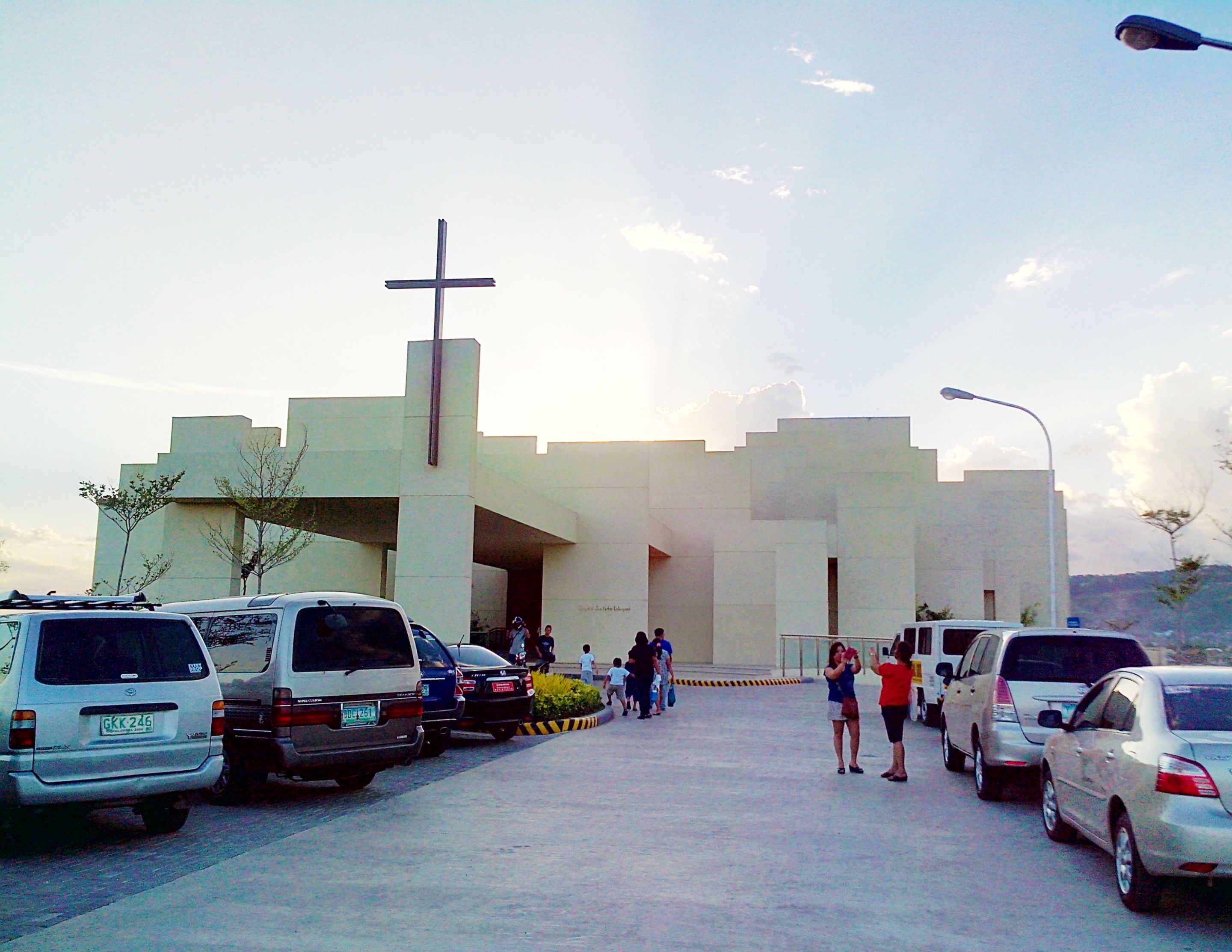
If you're familiar with dominos, the popular toy tiles we play with in board games - this chapel’s upright fortifications were literally similar to them - but in gigantic proportions. Imagine standing face to face with colossal dominos the size of a 3-storey tower. How would you react?
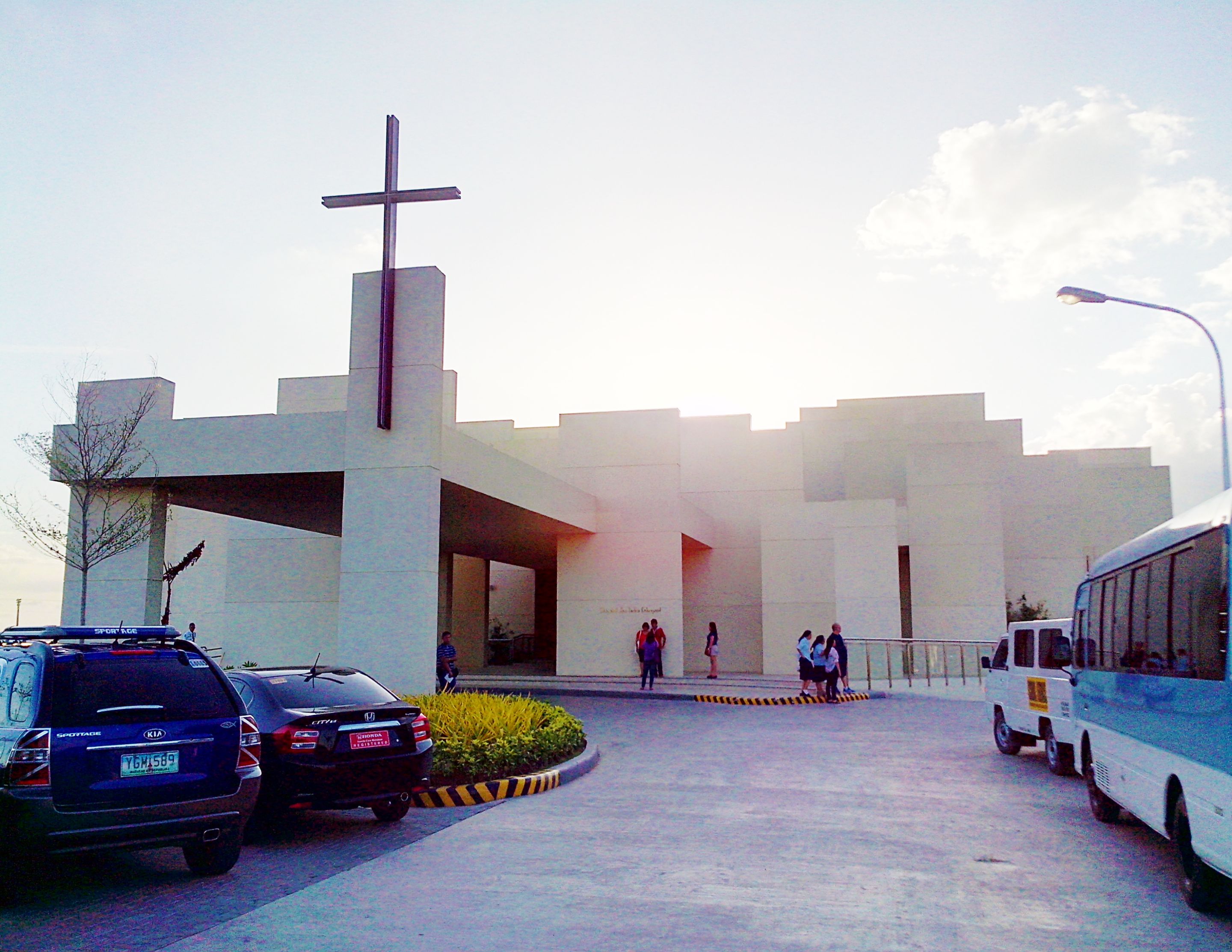
I was clearly blown away by its bizarre appearance at first, not having witnessed a similar design during my previous travels in other global locations. Even my clueless companion was completely speechless and couldn't stop scratching her head after seeing this strange building.
Despite its radical architecture, I later realized that these enormous vertical and light-beige concrete panels were all part of the chapel’s primary concept and design narrative.
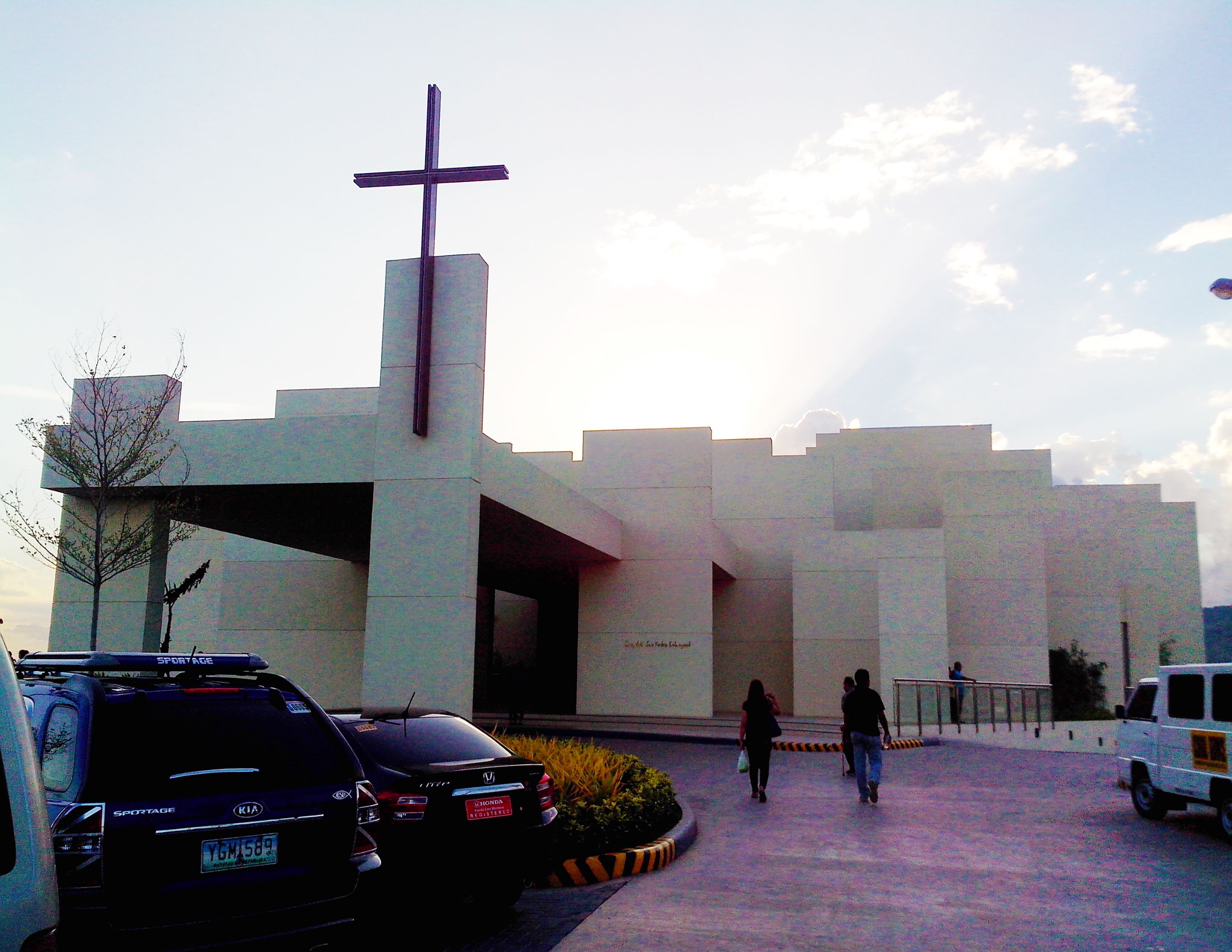
From where I stood, it was merely impossible to count the total number of upright walls with varying widths and heights reaching up to the skies. They were too high! You need to fly a drone to capture the full extent of these spectacular architectural elements from an aerial panoramic perspective.
However, according to conversations with fellow Architects from my local organization, the Chapel of San Pedro Calungsod also wears the nickname of “100 Walls” as purposely baptized by its foreign Architect who also has Filipino ancestry in his bloodline.
Moreover, this religious landmark also resembled trees in the woods. If you stared at these marvelous walls for a while, they in fact looked like our towering green friends of nature. As a result, the entire sacred complex also portrayed a maze-like configuration as viewed from the exterior. I had to scratch my head as well not due to confusion. Instead, it was an incredibly amazing sight!
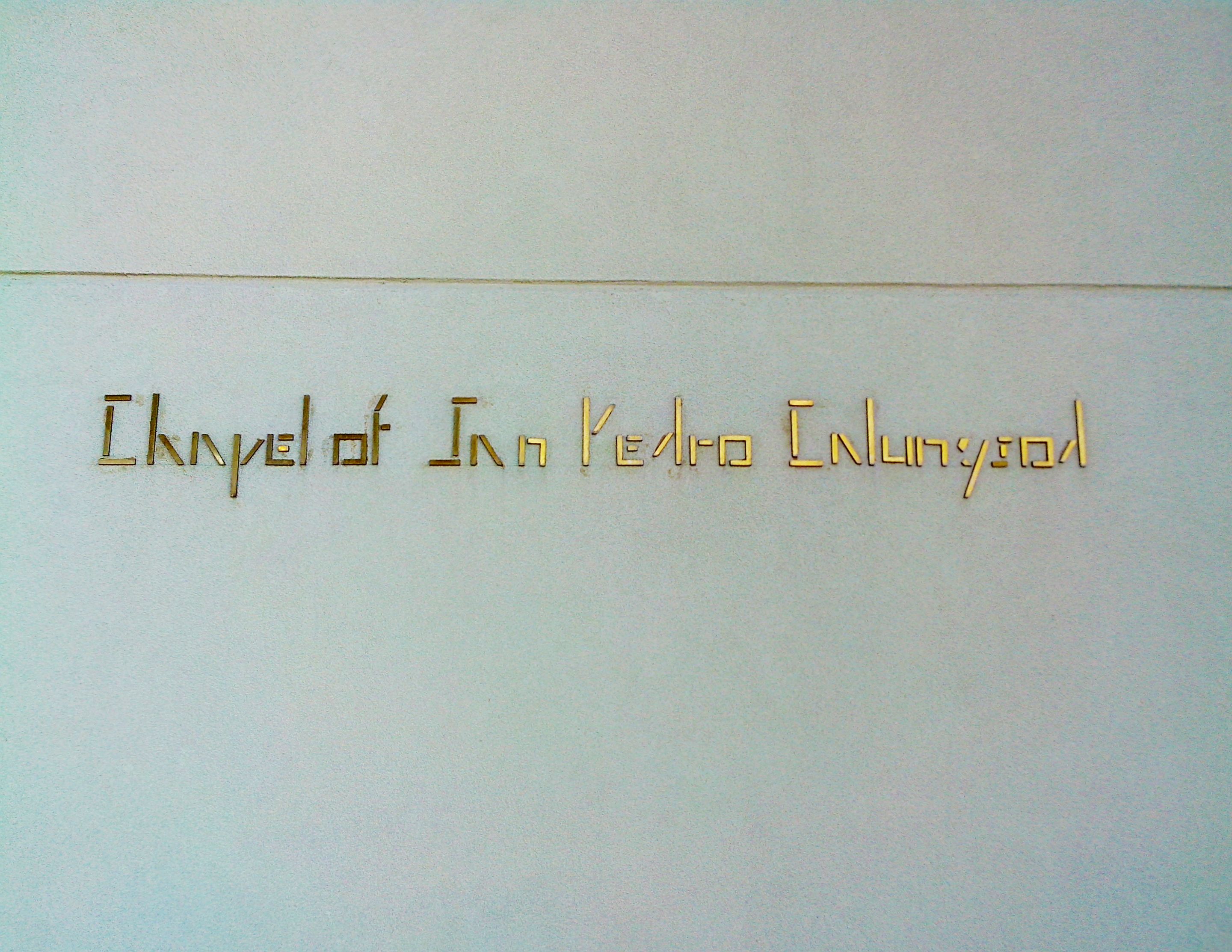
Even the chapel’s name had an artistic touch to it, embodying a unique font style as opposed to the common format. Take a look. Creative, isn't it?
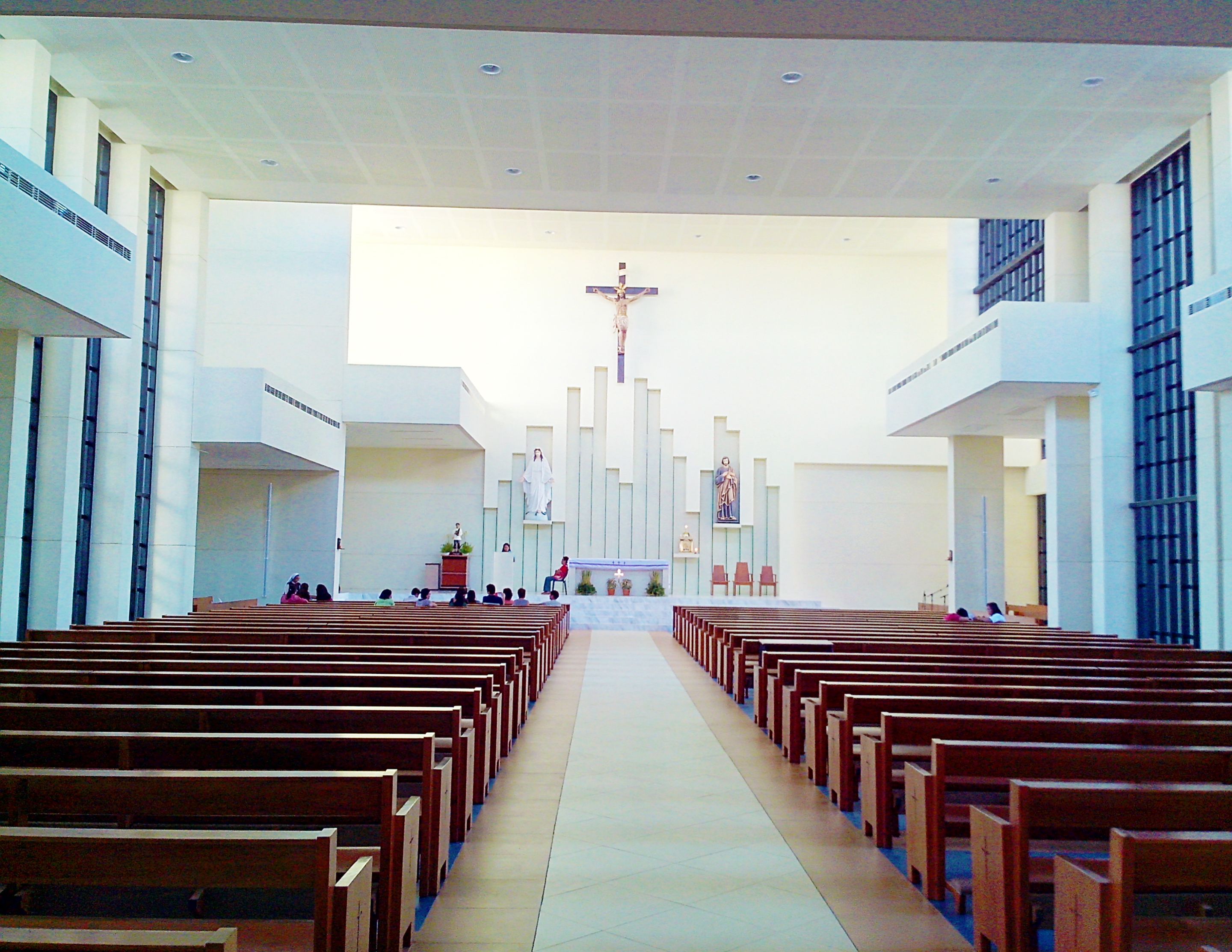
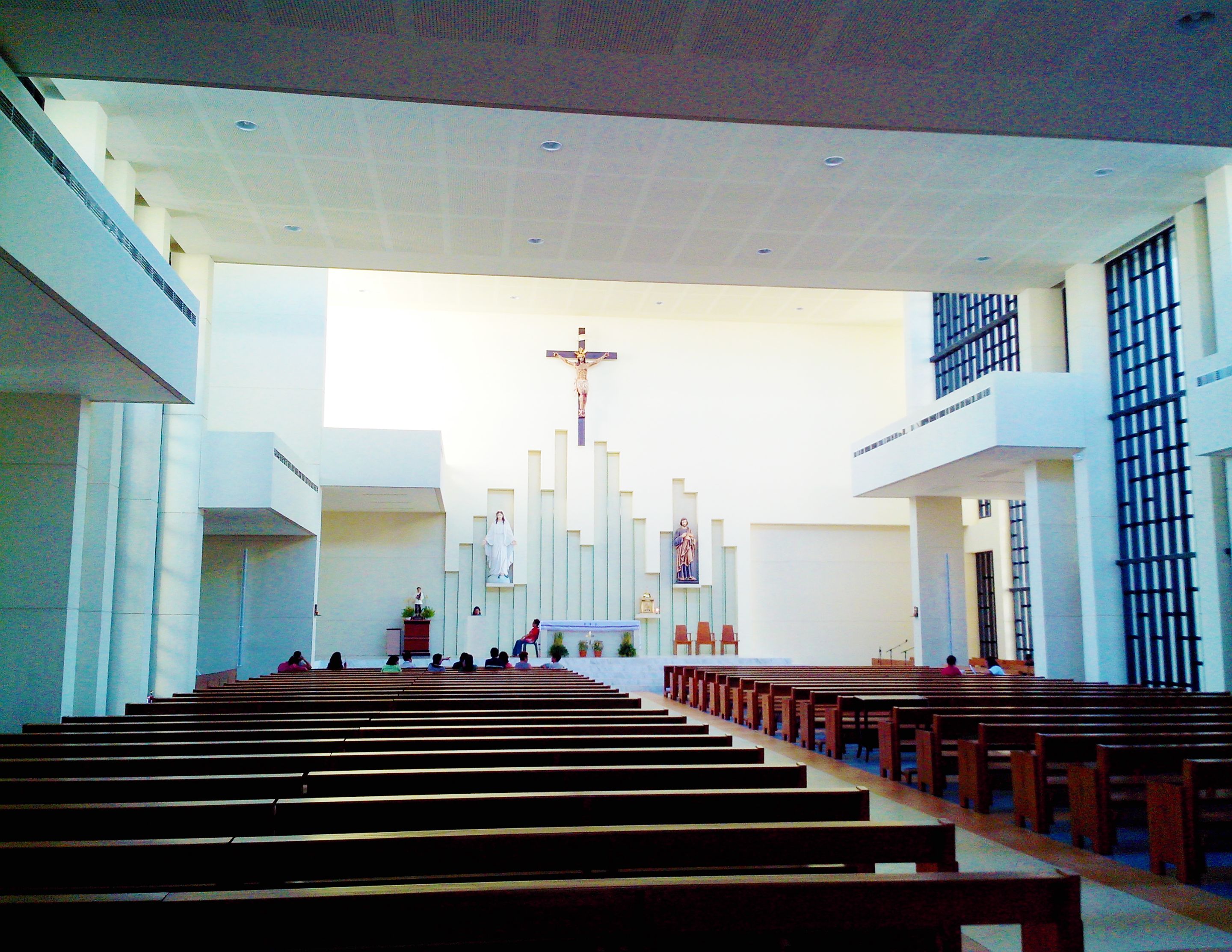
Regardless of the confusing effect of the chapel’s vertical walls on its exterior, everything changed as soon as I stepped inside its enlightening interior. The maze-like experience was gone! Pure tranquility was present, evident in the vastly open floor-to-ceiling space exhibiting the wide congregation chamber filled with wooden benches, surrounding holy artifacts, including the chapel’s central altar.
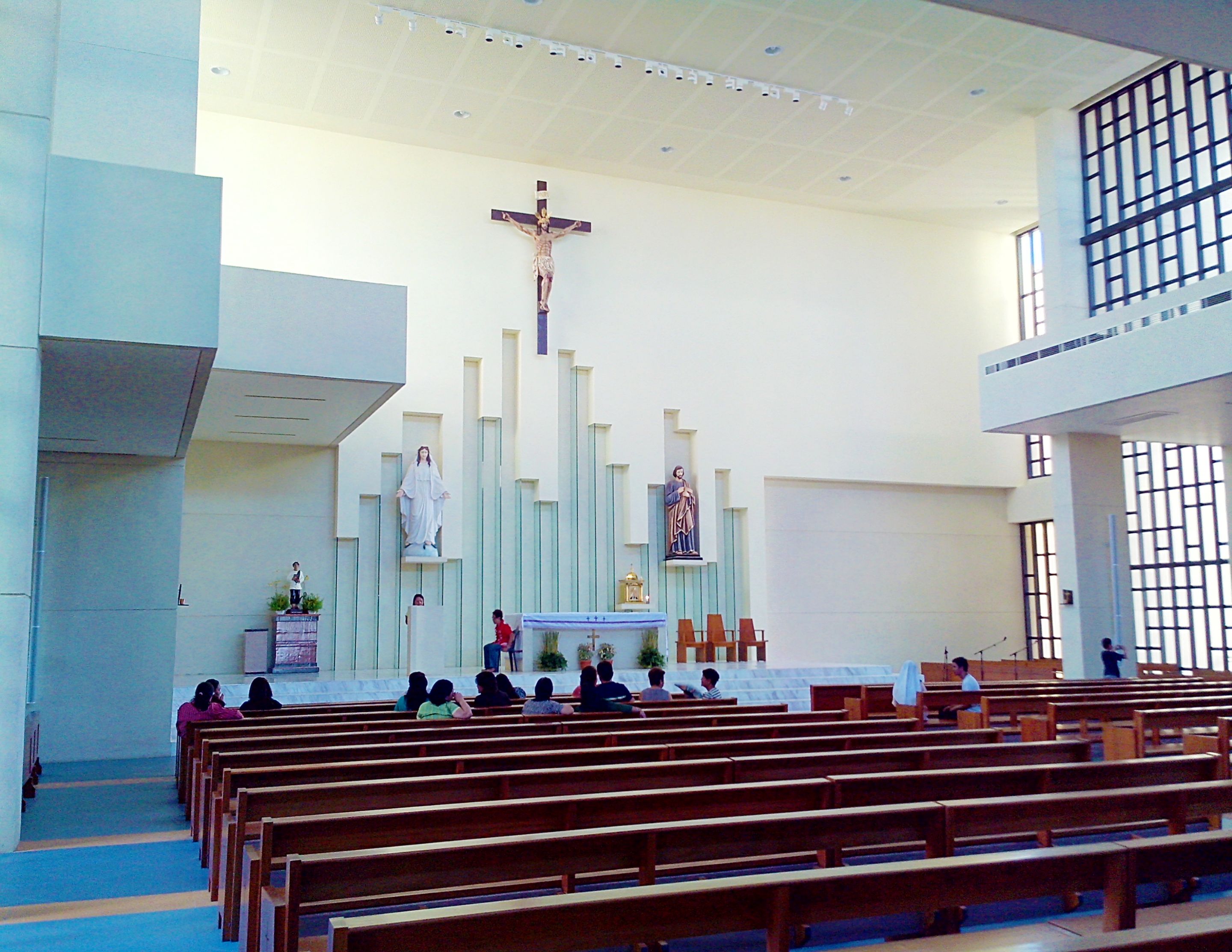
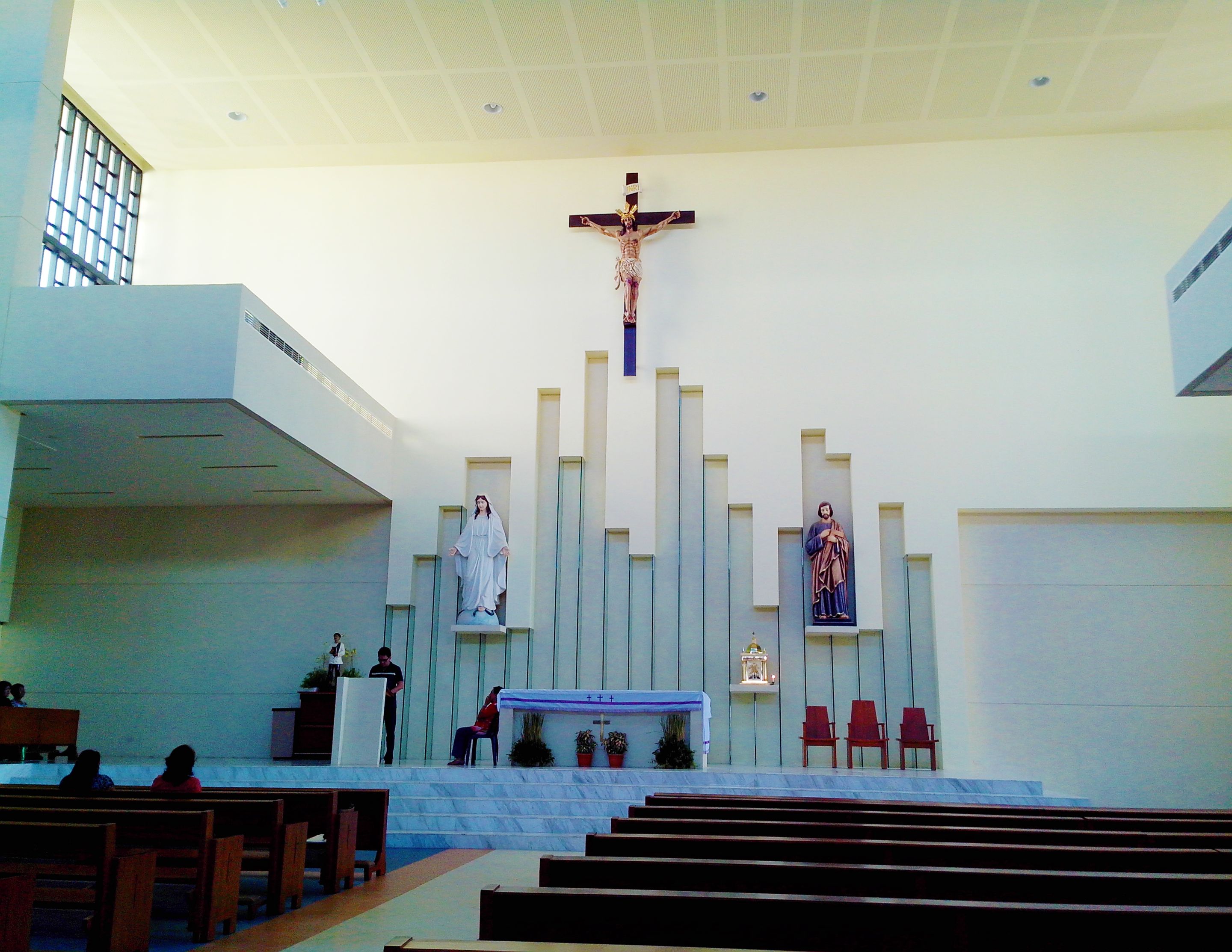
The interior design was minimalistic in its approach, providing an ideal environment for the faithful to solely focus on prayer, meditation, and reflection. The lightwashed architectural details contributed to its overall openness, giving the impression of a massive area suitable for large assemblies. Doesn't this environment convey a heavenly atmosphere?
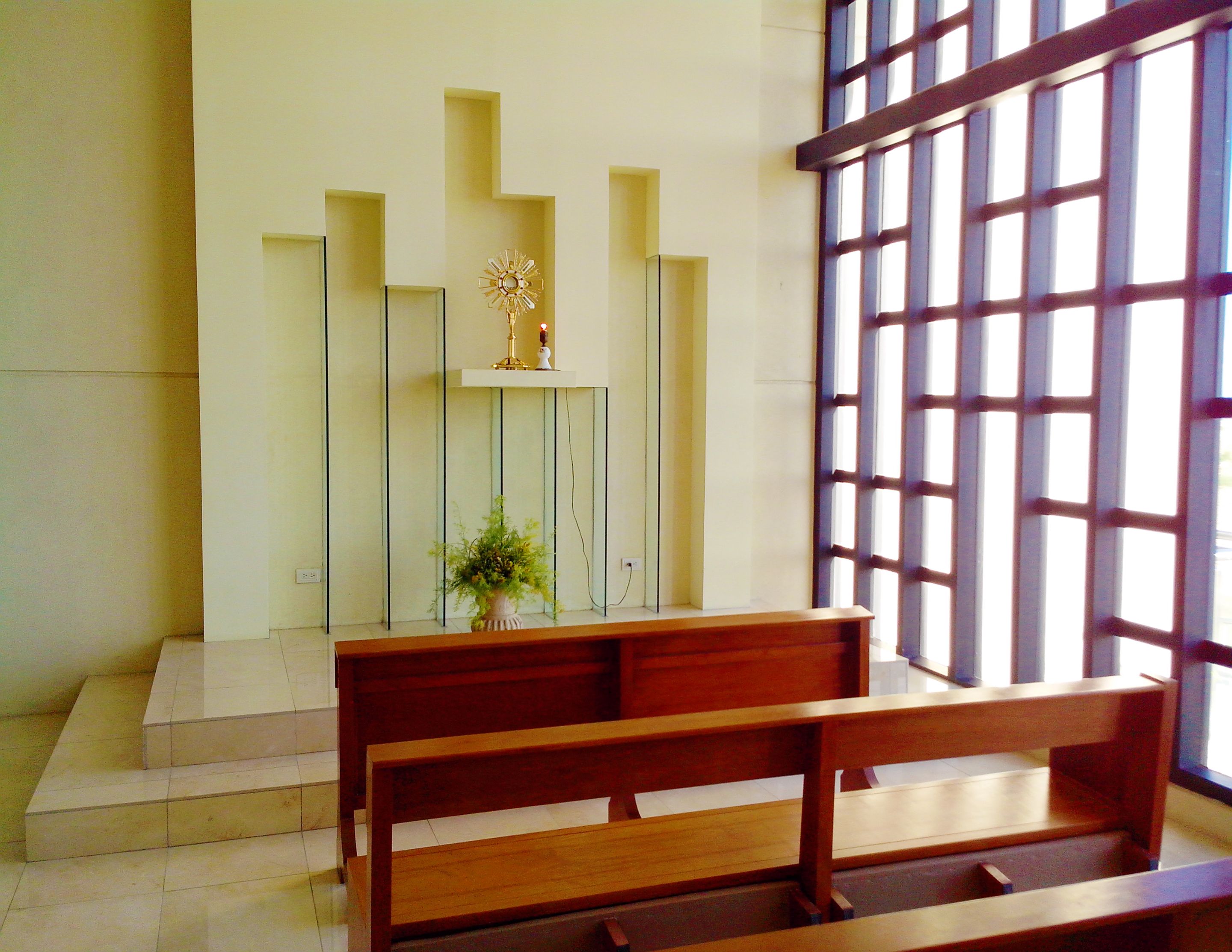
Despite its miniscule dimensions, the Adoration Chapel, enclosed in a special room within the main edifice, also invited a sense of serenity. We lingered here to pray for special favors and offered our gratitude for all the blessings received.
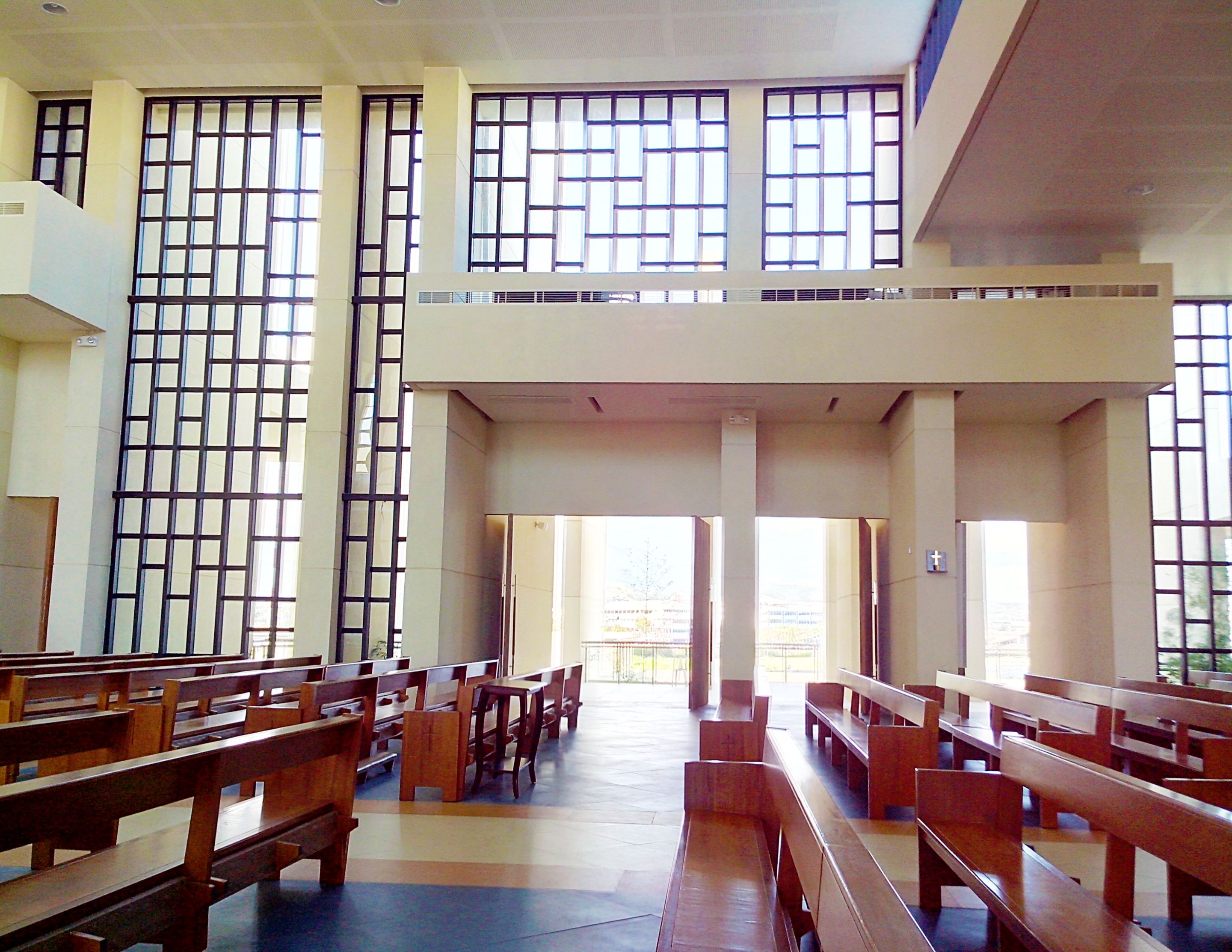
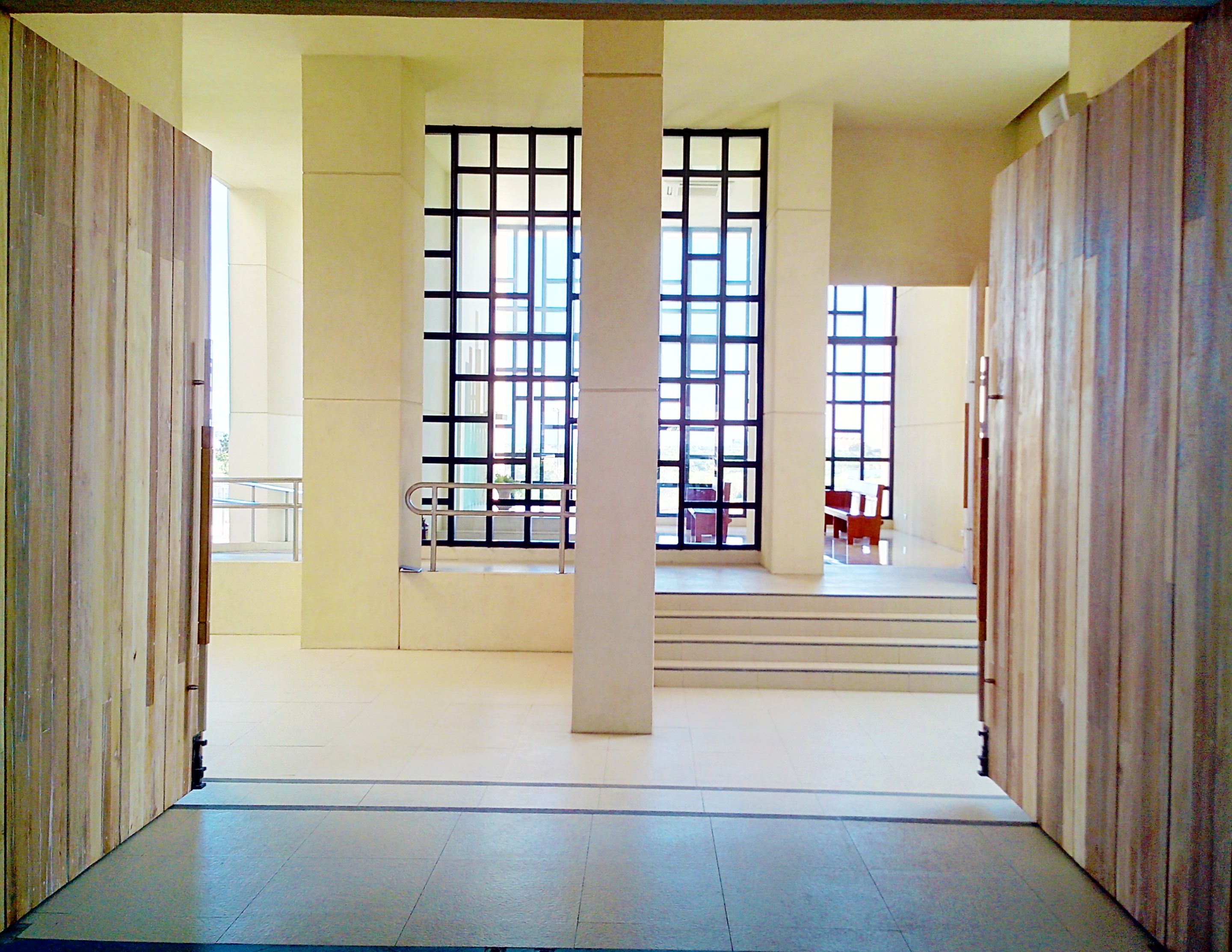
Another architectural characteristic that truly impressed me was the generous amount of natural light flooding the interior space. This was because of the translucent geometric windows installed at strategic points. There were clearly no design afterthoughts. Every building component seemed to be well-planned, built, and meticulously organized in their proper spots from an architectural viewpoint. Flawless!
“What do you think about this new chapel?” I asked my friend on our way out towards the landmark’s parking area.
“I’ve never seen anything like it before. I'm just so happy and proud that this epic architectural masterpiece selected Cebu to be its reputable home. Thanks for this unforgettable experience of architecture!” She replied with a huge smile on her face.
Reinforcing the Religious Heritage of Cebu
As a added bonus, we were also blessed to be one of the earliest patrons of this remarkable chapel.
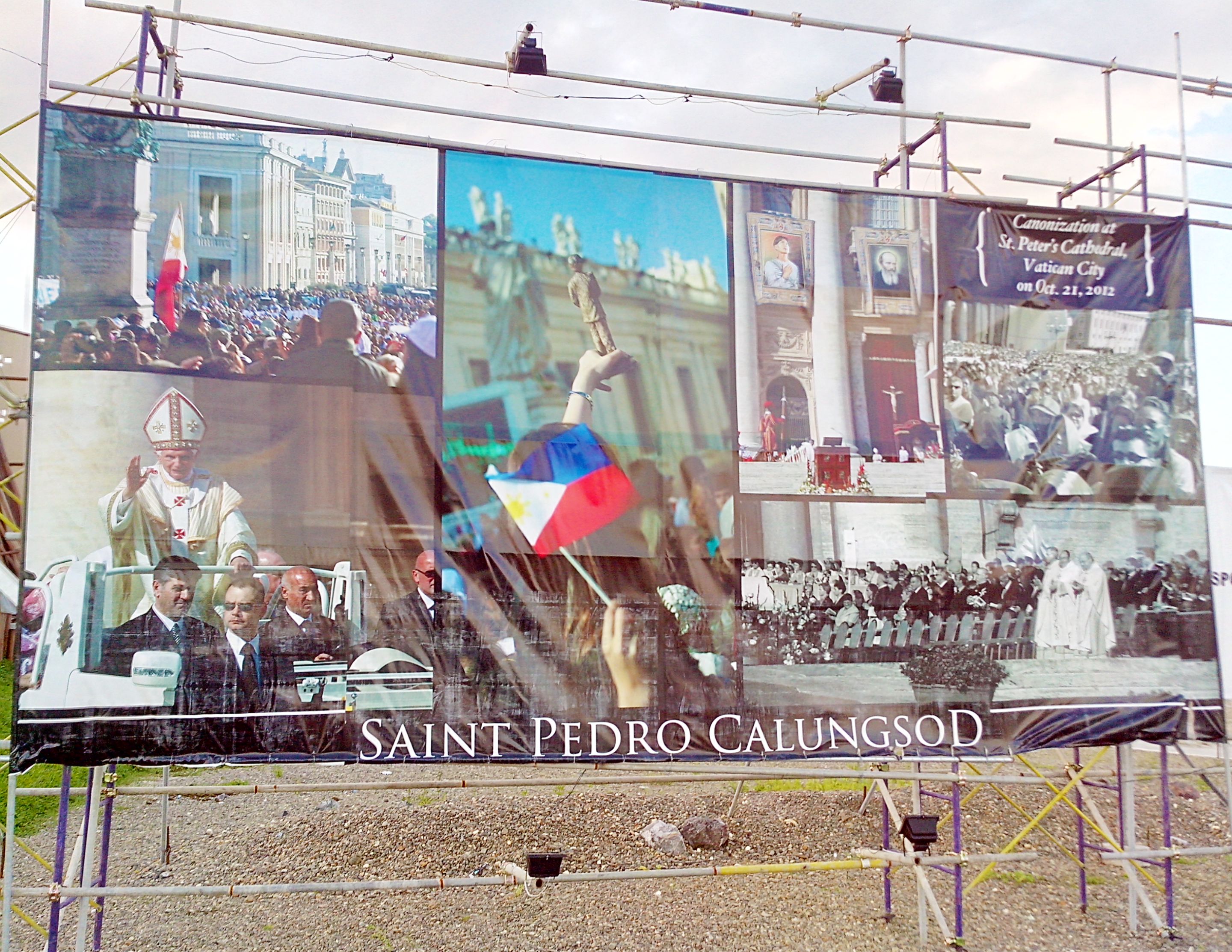

Across the SM Seaside City shopping center (which was still under construction during that occasion) was a massive empty lot reserved for future urban developments and allocated for temporary public gatherings. And installed on its site were colorful tarpaulin billboards showcasing the chapel’s glorious tribute to Saint Pedro Calungsod.
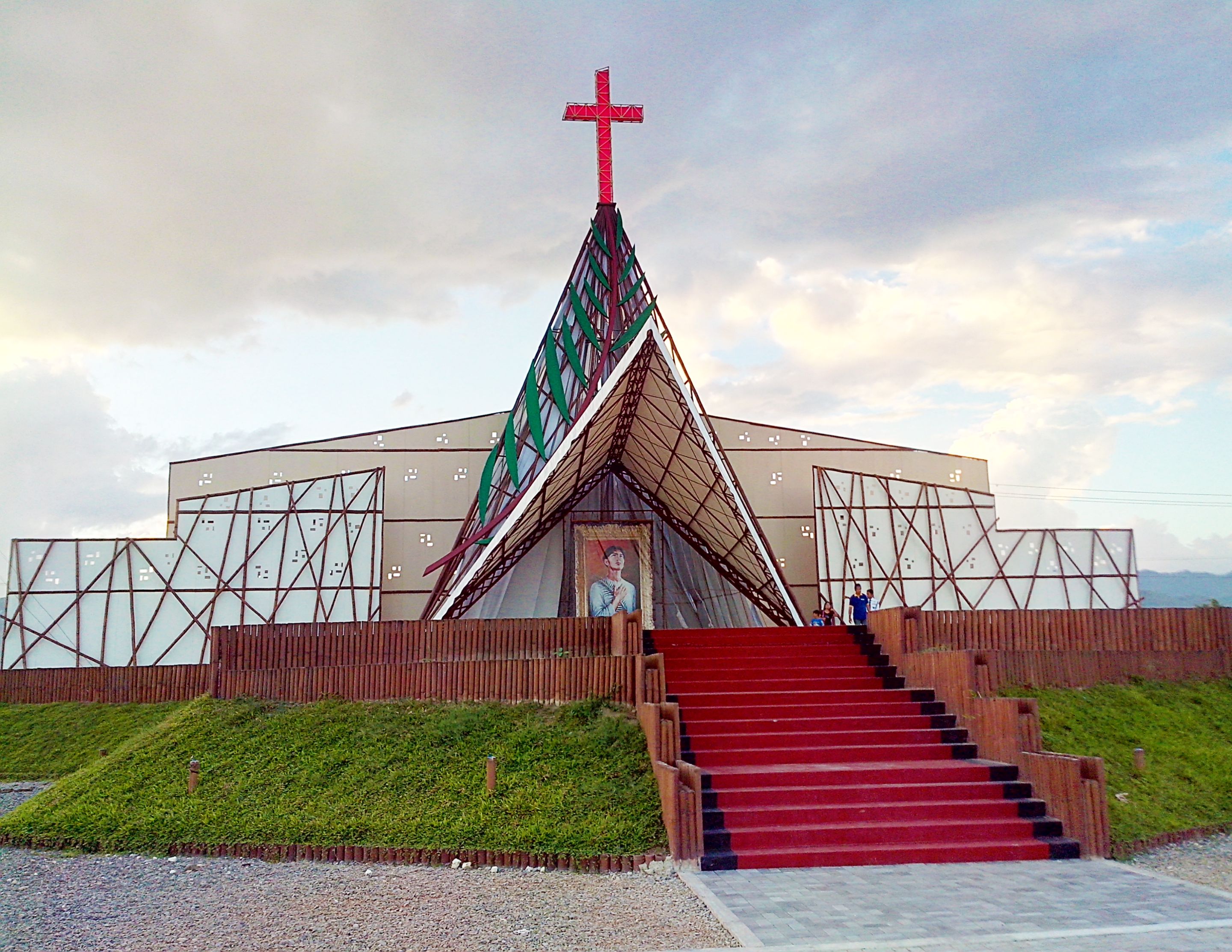
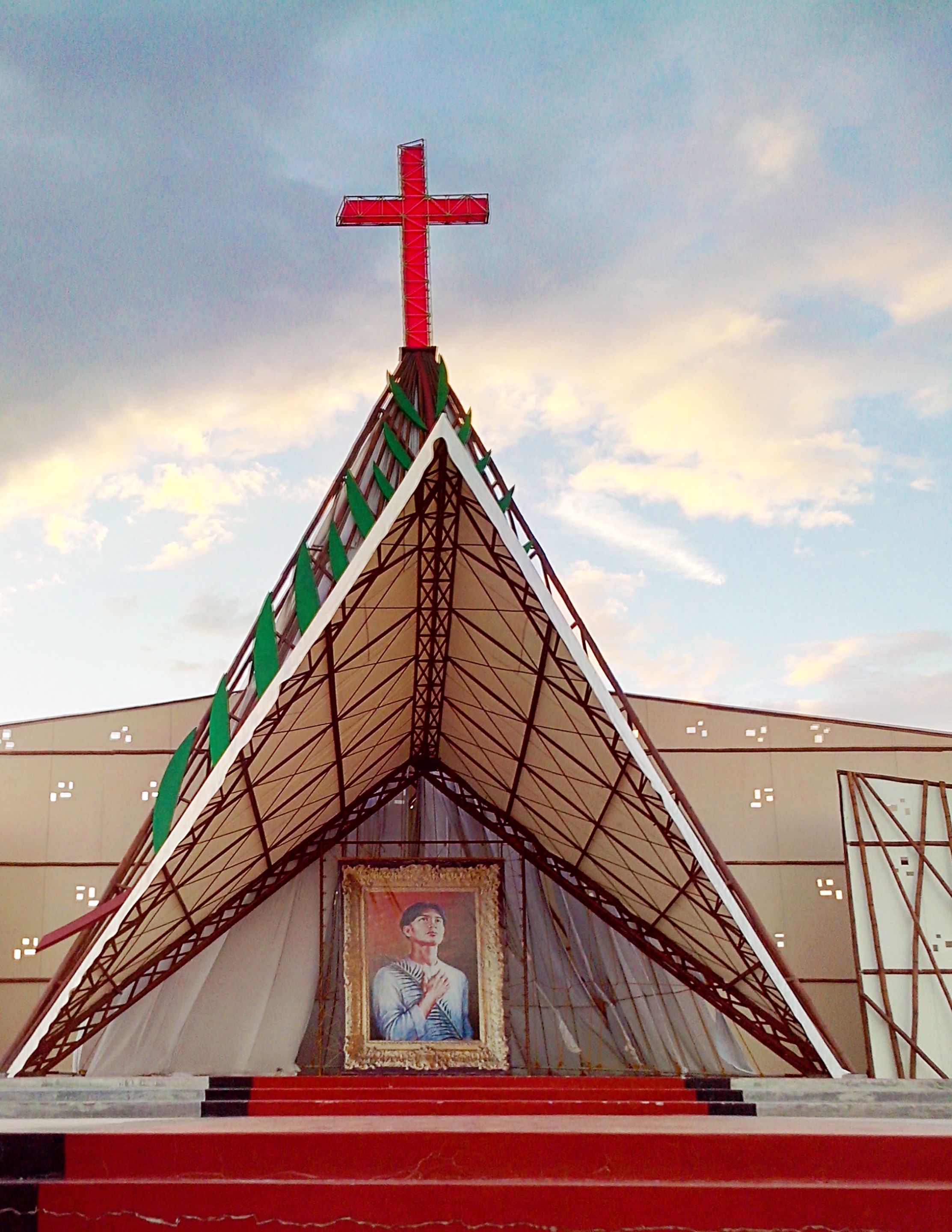
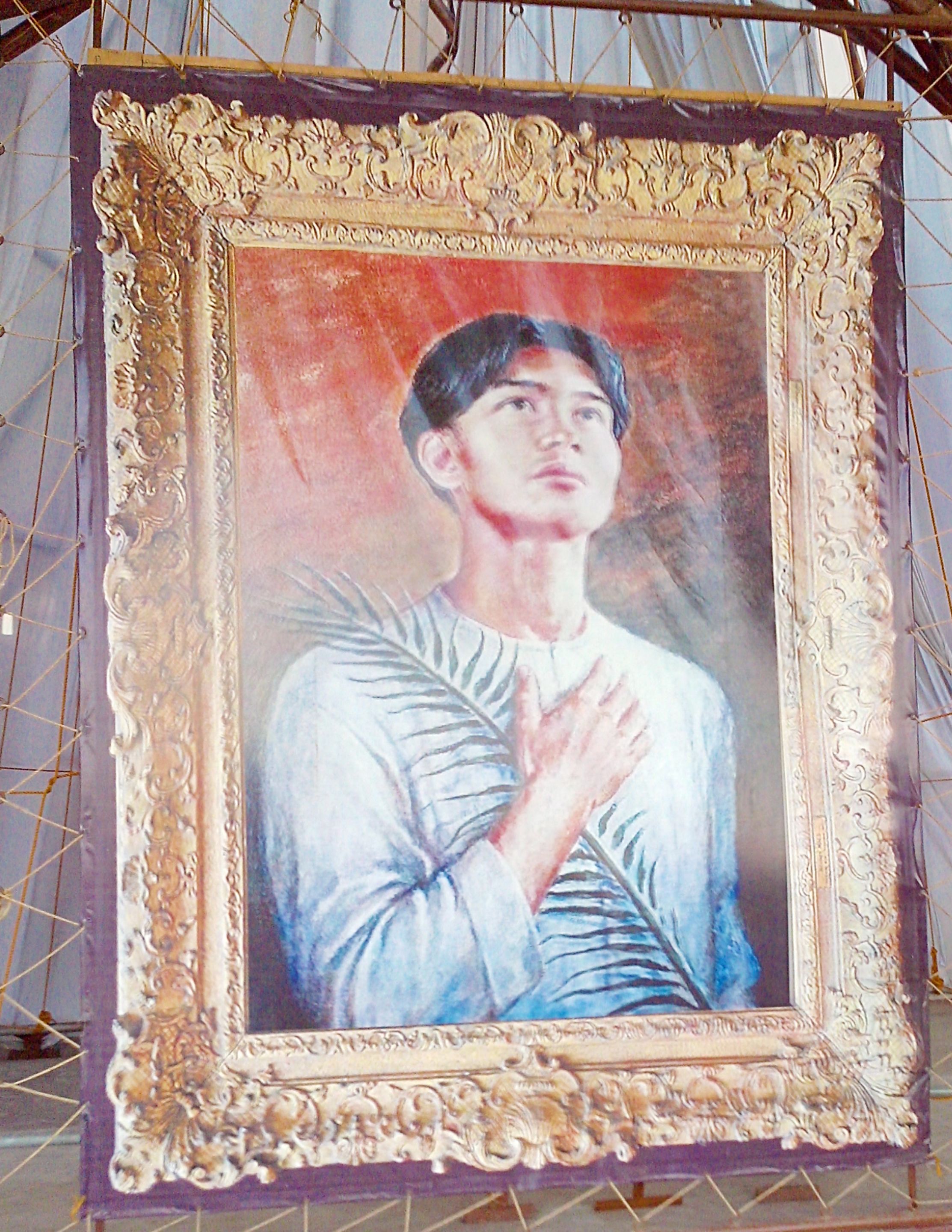
There was also a personalized structure especially constructed to honor Cebu’s local saint. It was fundamentally an oversized elevated podium that staged a 6-meter high photo of him, a sort of an improvised altar for mass veneration.
Now, it’s your turn. What are your thoughts about the Chapel of San Pedro Calungsod? Let's talk in the comments below.
Meet the Author
Self-Expression Empowers Human Evolution™
Copyright © 2020-2025 storiesoferne.
All rights reserved.


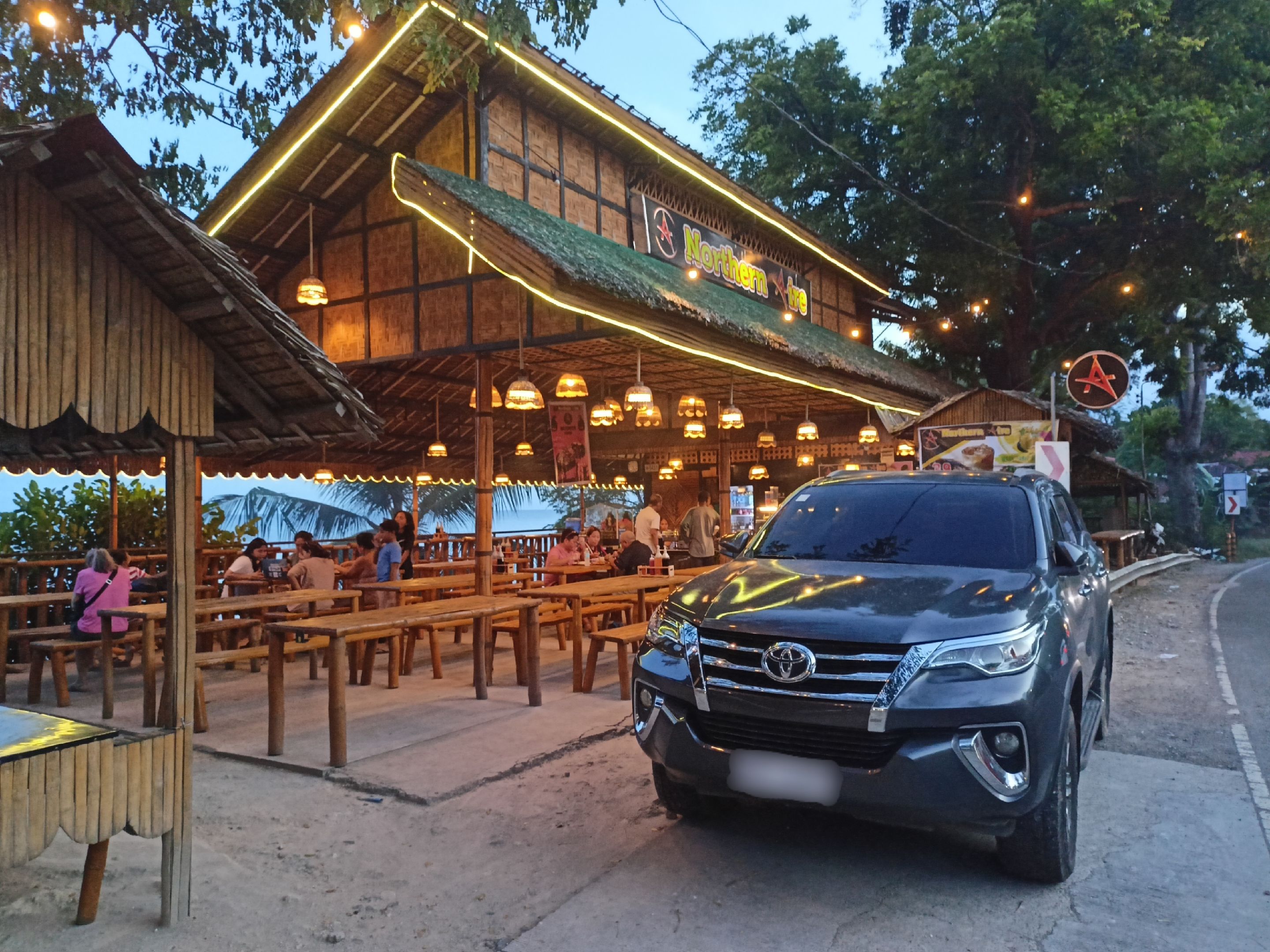
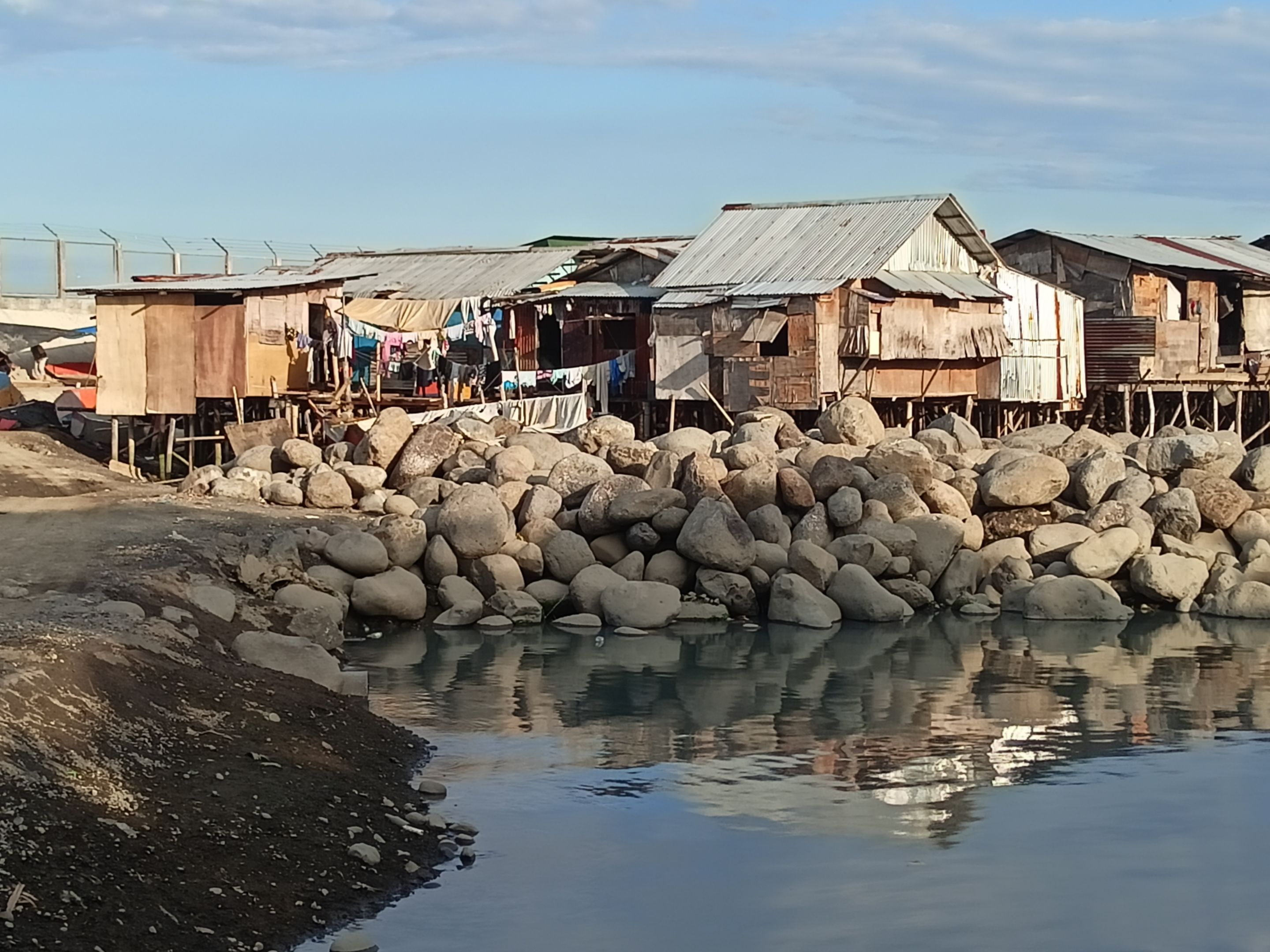
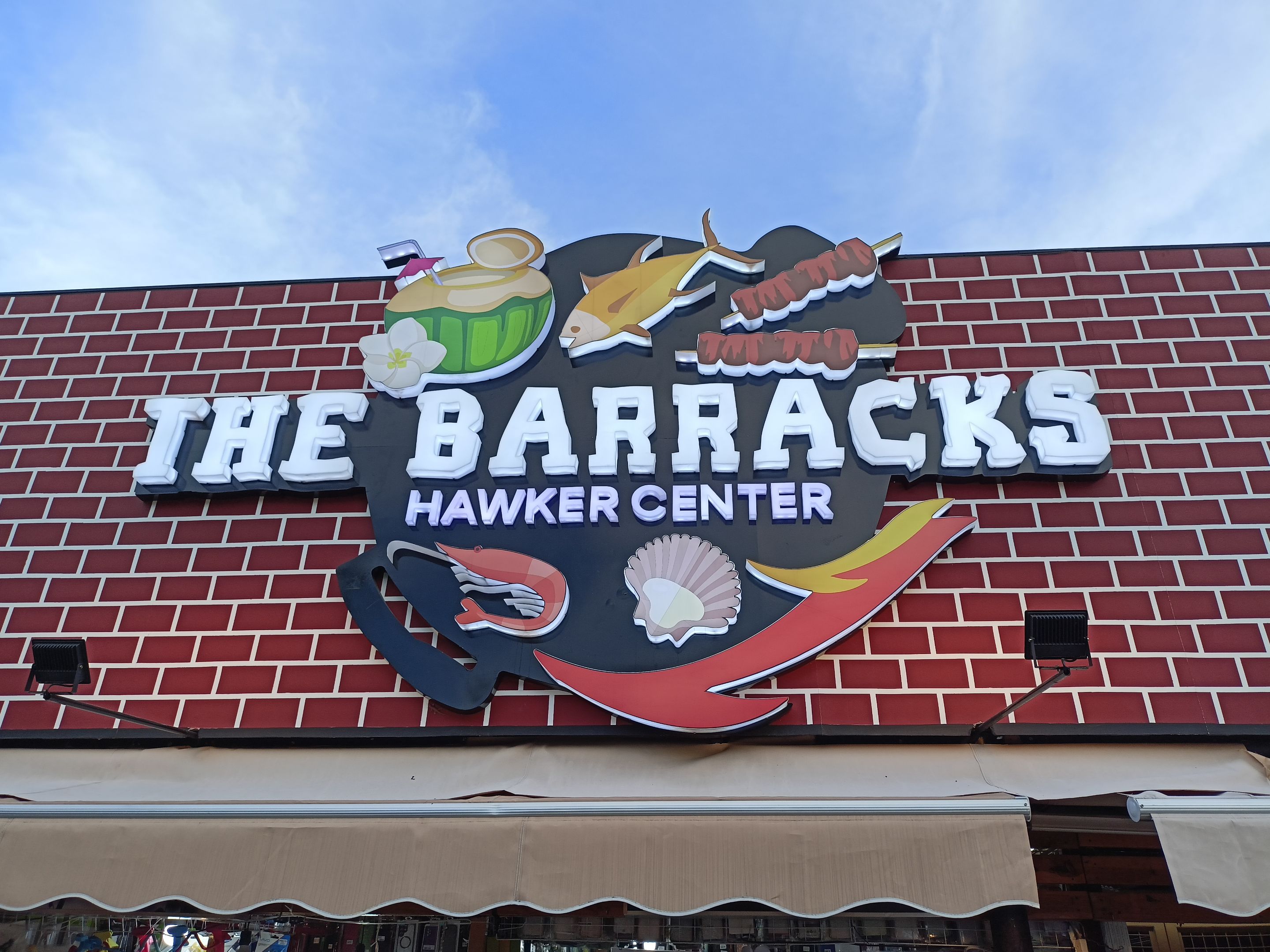
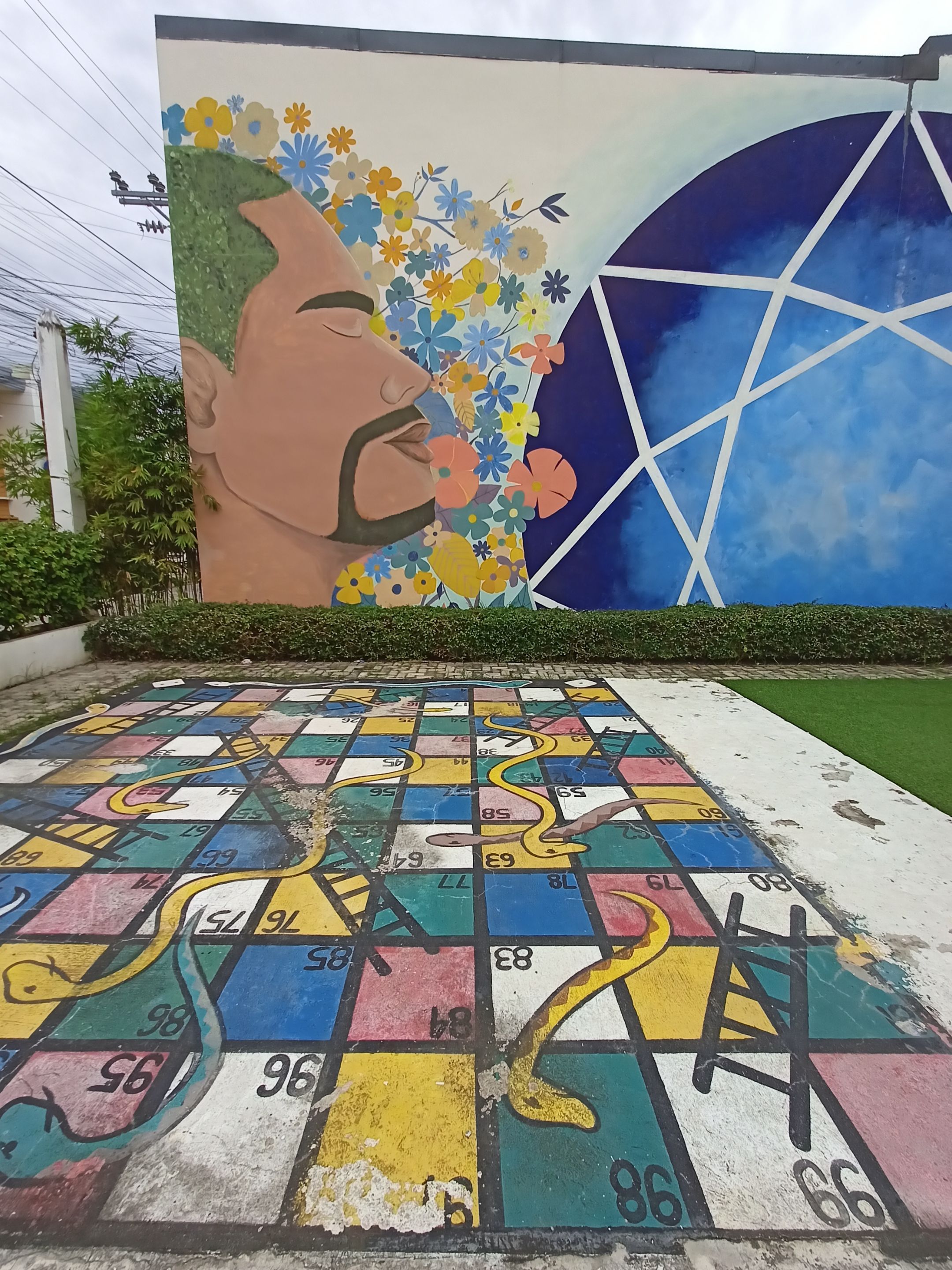
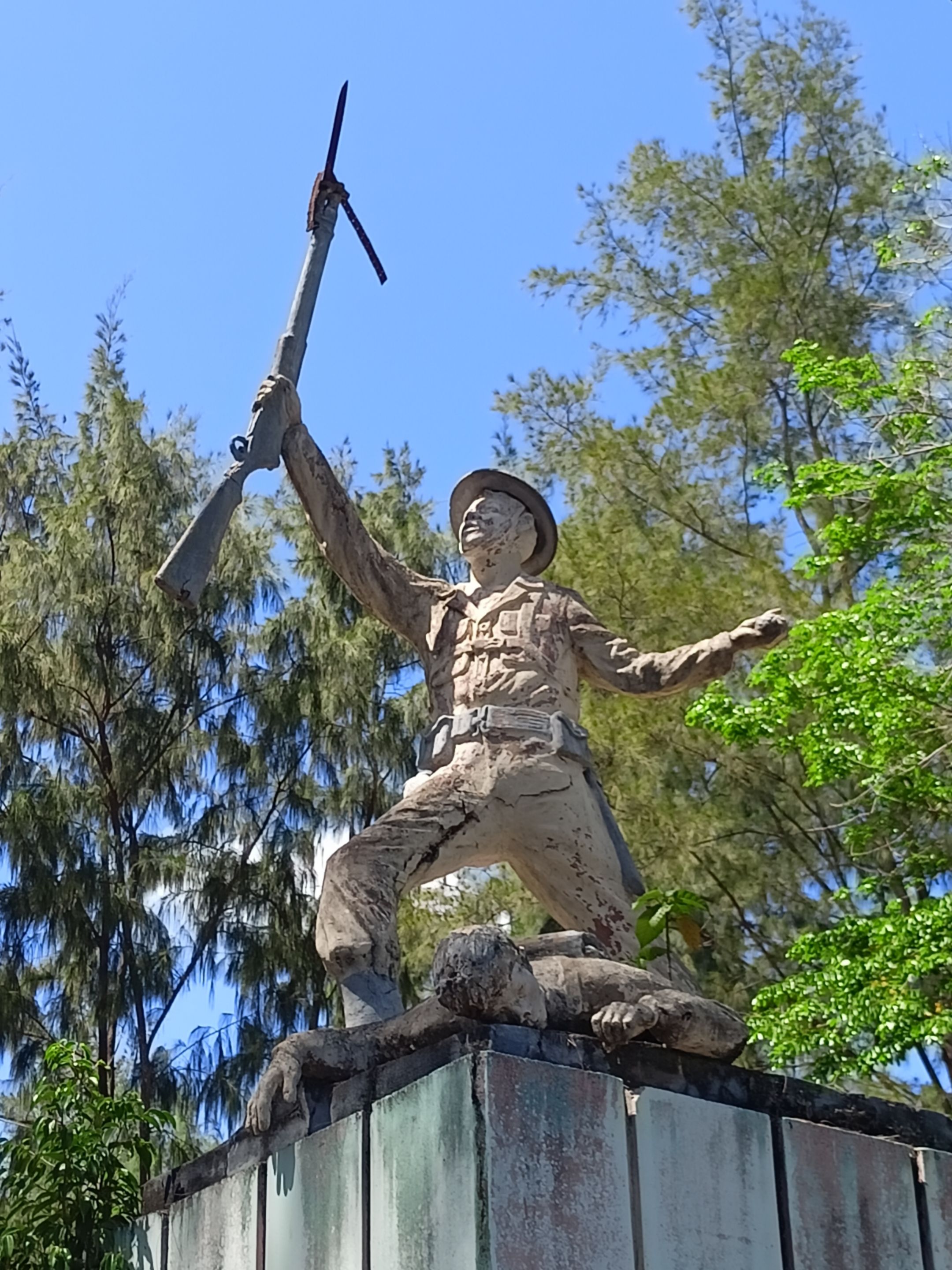

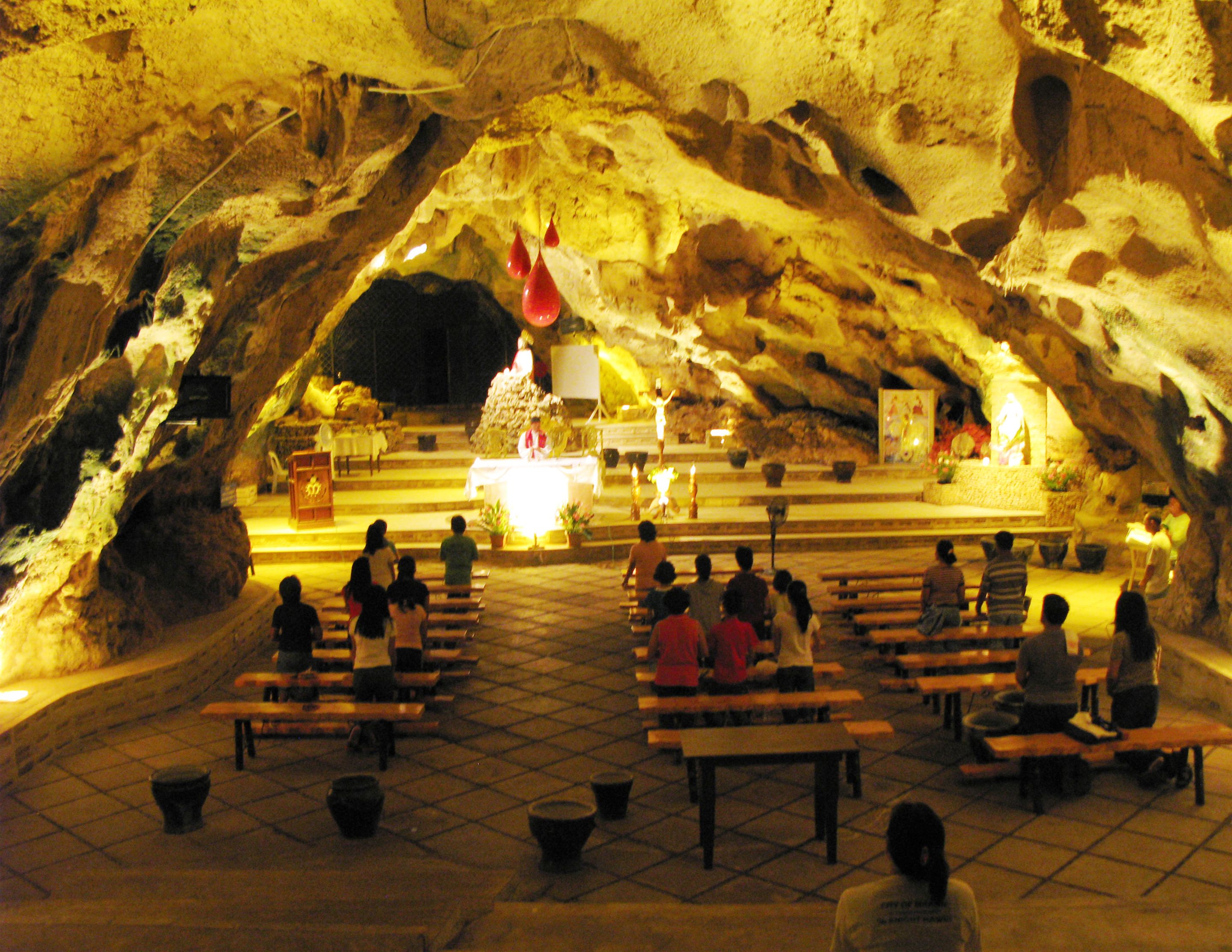
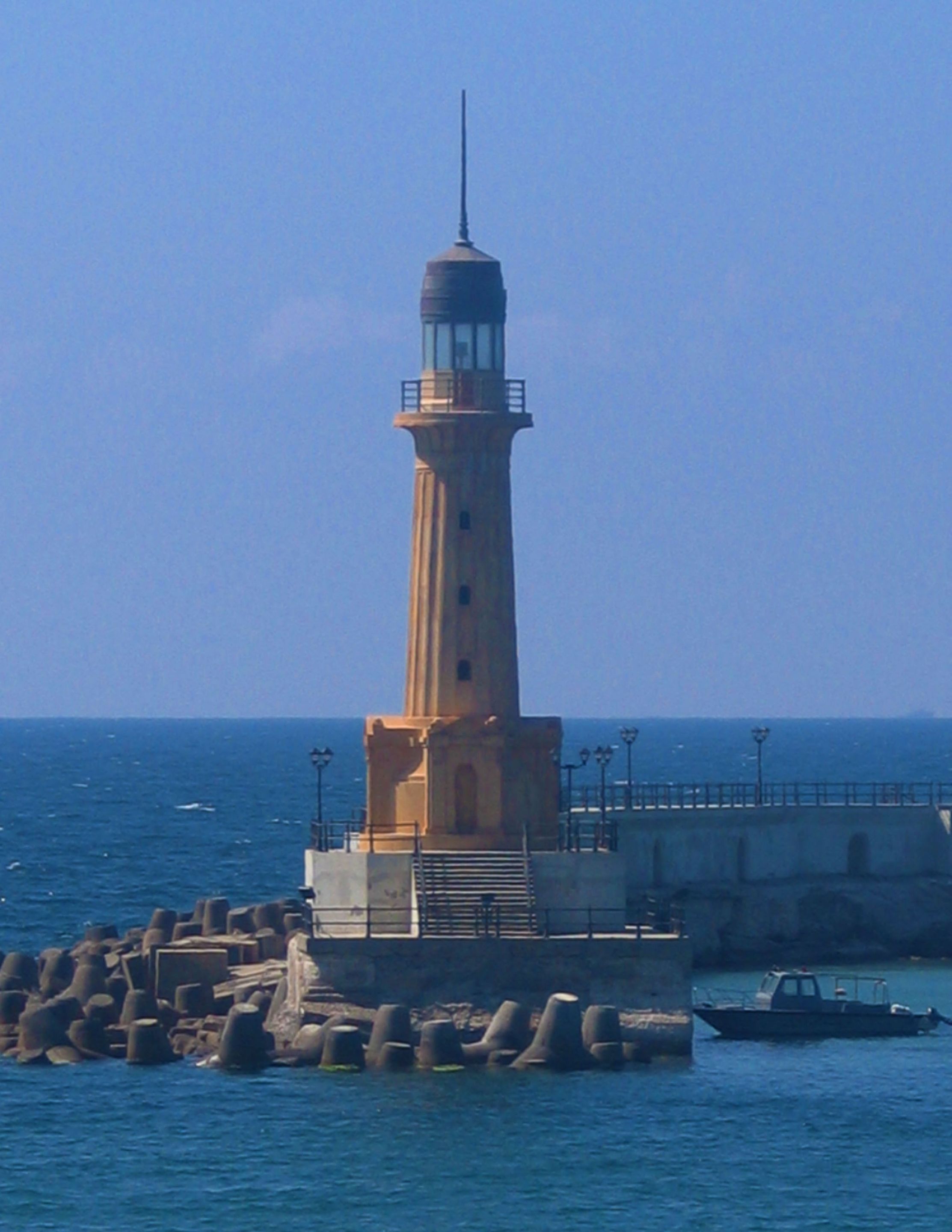
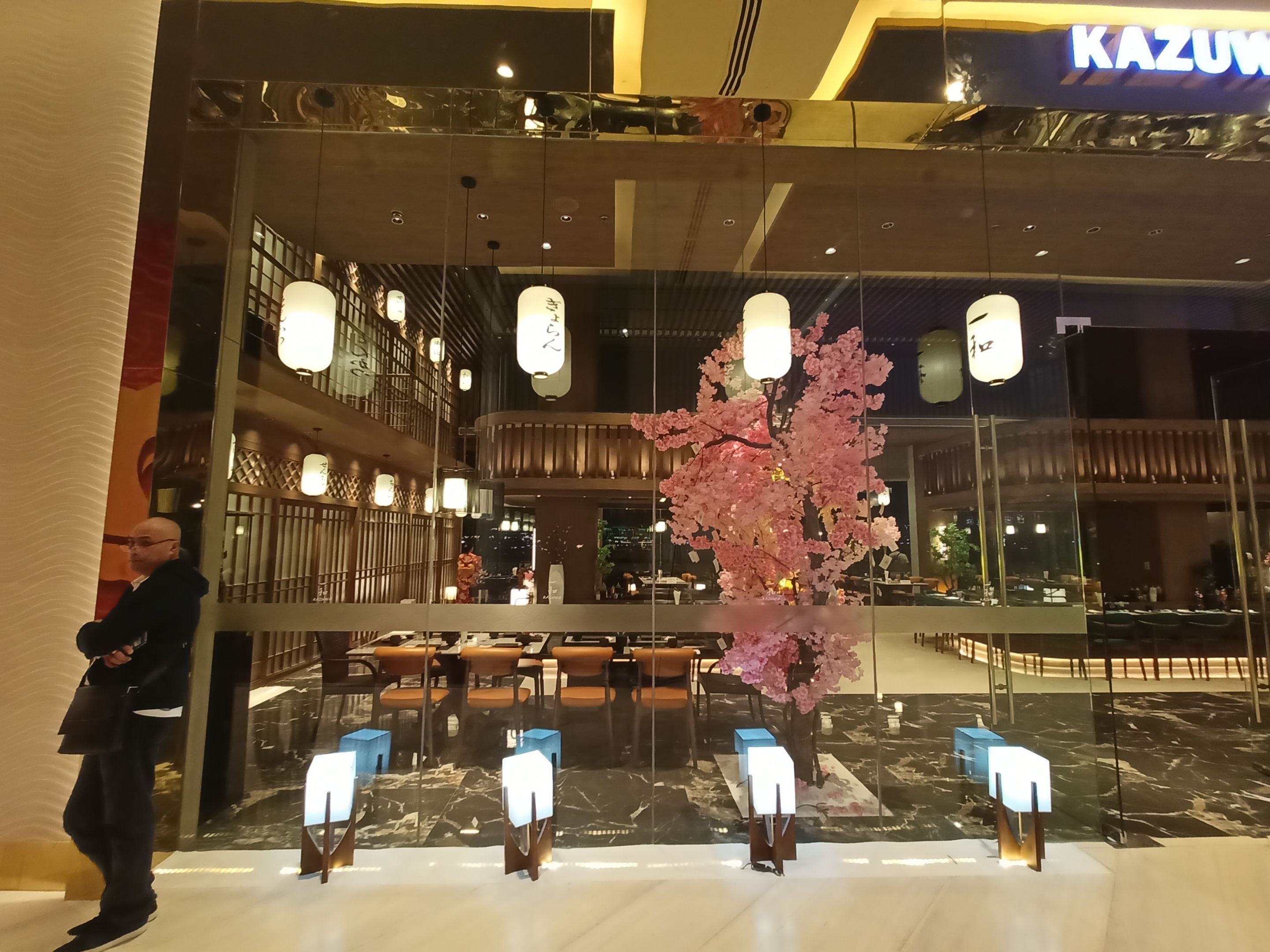
Comments